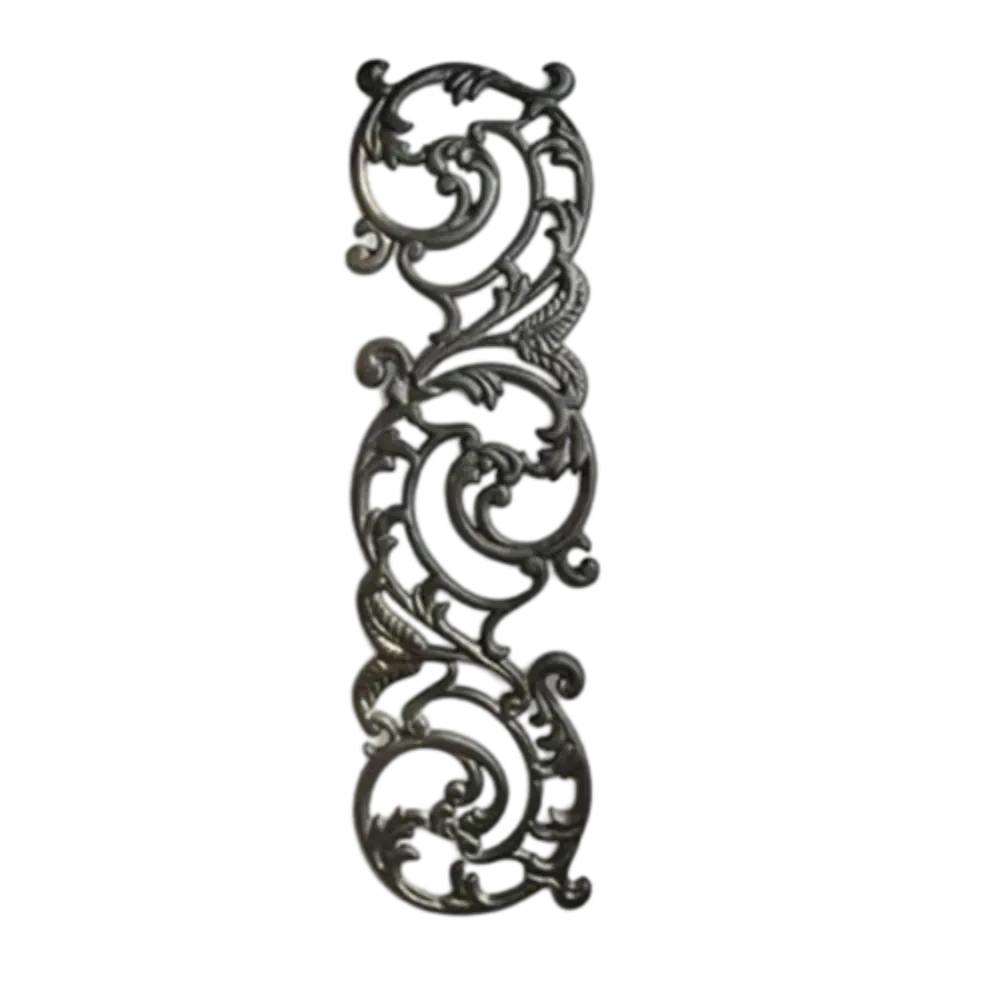Elegant Designs in Decorative Wrought Iron Creations for Home and Garden Enhancements
The Art and Craft of Ornamental Ironwork
Ornamental ironwork is a timeless art form that has captured the hearts of artisans and homeowners alike for centuries. This intricate craft combines functionality with aesthetic appeal, elevating the everyday structures of our lives into elevated works of art. From decorative railings to elaborate gates, ornamental ironwork is a testament to skilled craftsmanship and creative design, with a rich history that continues to evolve today.
At its essence, ornamental ironwork utilizes wrought iron—a material known for its malleability and durability. Unlike cast iron, which is rigid and brittle, wrought iron can be shaped and refined into intricate designs, allowing for the delicate detailing that characterizes many ornamental pieces. The technique began as a practical means of creating tools, weapons, and functional items, but over time, artisans began to recognize its potential for beauty.
Historically, ornamental ironwork flourished in the Middle Ages, particularly in Europe. It was during this period that blacksmiths honed their skills, creating gates, grilles, and railings that adorned castles and churches. The Gothic style, with its arches and spires, prominently featured ironwork designs, often incorporating intricate patterns that accentuated the architectural elements of the buildings. As styles evolved, so too did the designs of ironwork, taking inspiration from the Baroque and Renaissance periods, which introduced more elaborate and ornate forms.
In the modern era, ornamental ironwork has firmly established itself not just as a craft but also as a significant design element in both residential and commercial architecture. Contemporary designers have embraced the versatility of iron, allowing for a broad range of styles—from minimalist and modern to vintage and ornate. The beauty of ornamental iron lies in its ability to blend seamlessly into various settings, enhancing the character of a space while serving practical purposes.
ornamental ironwork

One of the key applications of ornamental ironwork is in the creation of gates and fences. These structures serve as both security measures and artistic statements. Elaborately designed gates can become focal points for properties, often reflecting the personality of the homeowners. The details in the ironwork can include swirling patterns, floral motifs, or geometric shapes, each telling a story about the craftsmanship and artistic vision behind the piece. Additionally, ironwork fences not only serve to enclose spaces but also provide visual interest, allowing light and air to flow through while maintaining a sense of security.
Railings are another popular application of ornamental ironwork, often seen in staircases, balconies, and patios. A well-designed railing can transform a simple staircase into a grand entrance, while balconies adorned with artistic ironwork can add a touch of elegance to an otherwise simple building façade. The balance between safety and style is maintained through the work of skilled artisans, who understand the structural integrity required while also emphasizing the aesthetic.
Furthermore, ornamental ironwork can extend to various decorative elements, such as lighting fixtures, furniture, and art pieces. Chandeliers crafted from wrought iron feature flowing designs that create an enchanting ambiance, while garden trellises and arbors showcase the beauty of nature intertwined with art. Iron furniture, including tables and chairs, offers durability while maintaining an artistic touch, making it suitable for both indoor and outdoor settings.
As we move further into the 21st century, the environmental sustainability of materials and practices is becoming increasingly important. Artisans are now exploring ways to repurpose and recycle iron, integrating it into new designs that honor both tradition and modern values. This evolution in the craft not only preserves the artistry of ornamental ironwork but also ensures its relevance in a rapidly changing world.
In conclusion, ornamental ironwork is more than mere decoration; it is a celebration of craftsmanship, history, and creativity. Whether adorning majestic gates, elegant railings, or artistic fixtures, the beauty of ironwork enriches our lives and environments. As this art form continues to evolve, it holds the promise of inspiring future generations of artists and homeowners to appreciate the delicate interplay of function and beauty in iron.
-
Wrought Iron Components: Timeless Elegance and Structural StrengthNewsJul.28,2025
-
Window Hardware Essentials: Rollers, Handles, and Locking SolutionsNewsJul.28,2025
-
Small Agricultural Processing Machines: Corn Threshers, Cassava Chippers, Grain Peelers & Chaff CuttersNewsJul.28,2025
-
Sliding Rollers: Smooth, Silent, and Built to LastNewsJul.28,2025
-
Cast Iron Stoves: Timeless Heating with Modern EfficiencyNewsJul.28,2025
-
Cast Iron Pipe and Fitting: Durable, Fire-Resistant Solutions for Plumbing and DrainageNewsJul.28,2025
-
 Wrought Iron Components: Timeless Elegance and Structural StrengthJul-28-2025Wrought Iron Components: Timeless Elegance and Structural Strength
Wrought Iron Components: Timeless Elegance and Structural StrengthJul-28-2025Wrought Iron Components: Timeless Elegance and Structural Strength -
 Window Hardware Essentials: Rollers, Handles, and Locking SolutionsJul-28-2025Window Hardware Essentials: Rollers, Handles, and Locking Solutions
Window Hardware Essentials: Rollers, Handles, and Locking SolutionsJul-28-2025Window Hardware Essentials: Rollers, Handles, and Locking Solutions -
 Small Agricultural Processing Machines: Corn Threshers, Cassava Chippers, Grain Peelers & Chaff CuttersJul-28-2025Small Agricultural Processing Machines: Corn Threshers, Cassava Chippers, Grain Peelers & Chaff Cutters
Small Agricultural Processing Machines: Corn Threshers, Cassava Chippers, Grain Peelers & Chaff CuttersJul-28-2025Small Agricultural Processing Machines: Corn Threshers, Cassava Chippers, Grain Peelers & Chaff Cutters












